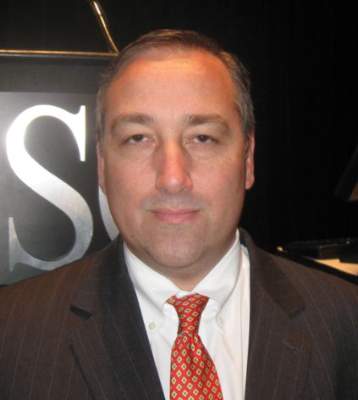User login
Patients with melanoma and a single tumor–positive sentinel lymph node (SLN) had no improvement in overall (OS) or disease-free survival (DFS) with adjuvant high-dose interferon alfa-2b (HDI), and patients with histologically negative, RT-PCR–positive SLNs had no improvement with completion lymph node dissection (CLND) or CLND plus interferon, according to researchers.
For patients with a single positive SLN who received HDI, compared with the observation-only group, 5-year OS was 71.4% and 74.8% and 5-year DFS was 70.9% and 67.1%, respectively. For patients with reverse transcription polymerase chain reaction (RT-PCR)–positive but histologically negative SLNs who received CLND plus interferon, or CLND only, compared with the observation-only group, 5-year OS was 86.9%, 85.9%, and 85.5%, and 5-year DFS was 83.9%, 84.0%, and 79.4%, respectively.
The finding that HDI offers no survival benefit contradicts an earlier study (ECOG E1694) that compared HDI with ganglioside vaccine treatment.
“The results of this study refute the conclusion that improved DFS and OS in ECOG E1694 was due to a beneficial effect of HDI because HDI treatment in ECOG E1694 was not compared with observation or placebo, but to a vaccine that is now known to be associated with a greater risk of recurrence and mortality,” wrote Dr. Kelly M. McMasters, surgical oncologist at the University of Louisville (Ky.) and his colleagues (J Clin Oncol. 2016 Feb 8. doi: 10.1200/JCO.205.63.3776).
The prospective, randomized Sunbelt Melanoma Trial included patients with melanoma of thickness 1 mm or greater without evidence of metastasis. Protocol A, with 218 patients with histologically positive SLNs, did not meet its accrual goal of 150 patients each for arms 1 and 2. Protocol B had 556 patients with RT-PCR–positive but histologically negative SLNs. The median follow-up was 71 months.
The trial found that HDI therapy after CLND did not improve DFS or OS for patients with minimal nodal tumor burden. For patients randomly assigned to HDI versus observation after CLND, hazard ratios for DFS and OS were 0.82 (95% confidence interval, 0.50-1.36; P = .45) and 1.10 (0.69-1.76; P = .68).
In patients with stage I or II melanoma who have tumor-negative SLNs by hematoxylin and eosin histopathology and immunohistochemistry, but have molecular evidence of melanoma by RT-PCR analysis, no significant differences were observed among patients randomly assigned to CLND or CLND plus interferon treatment. Compared with observation, CLND alone showed a slight DFS improvement (hazard ratio, 0.58; 95% CI, 0.35-0.94; P = .0277), but no OS improvement (HR, 1.00; 95% CI, 0.634-1.59; P = .99). Patients who received CLND plus interferon had no significant improvement in DFS or OS, compared with observation.
Subgroup analysis showed that in patients with a single positive SLN, HDI was associated with improved DFS only in patients with ulceration (HR, 0.43; 95% CI, 0.21-0.87; P = .0183; n = 75) and with Breslow thickness more than 4 mm (HR, 0.35; 95% CI, 0.14-0.88; P = .0259; n = 42). No OS improvement was observed.
“Taken together, these data support the conclusion that the benefit of HDI is small, perhaps because only a fraction of the patient population responds to therapy,” the investigators wrote.
Patients with melanoma and a single tumor–positive sentinel lymph node (SLN) had no improvement in overall (OS) or disease-free survival (DFS) with adjuvant high-dose interferon alfa-2b (HDI), and patients with histologically negative, RT-PCR–positive SLNs had no improvement with completion lymph node dissection (CLND) or CLND plus interferon, according to researchers.
For patients with a single positive SLN who received HDI, compared with the observation-only group, 5-year OS was 71.4% and 74.8% and 5-year DFS was 70.9% and 67.1%, respectively. For patients with reverse transcription polymerase chain reaction (RT-PCR)–positive but histologically negative SLNs who received CLND plus interferon, or CLND only, compared with the observation-only group, 5-year OS was 86.9%, 85.9%, and 85.5%, and 5-year DFS was 83.9%, 84.0%, and 79.4%, respectively.
The finding that HDI offers no survival benefit contradicts an earlier study (ECOG E1694) that compared HDI with ganglioside vaccine treatment.
“The results of this study refute the conclusion that improved DFS and OS in ECOG E1694 was due to a beneficial effect of HDI because HDI treatment in ECOG E1694 was not compared with observation or placebo, but to a vaccine that is now known to be associated with a greater risk of recurrence and mortality,” wrote Dr. Kelly M. McMasters, surgical oncologist at the University of Louisville (Ky.) and his colleagues (J Clin Oncol. 2016 Feb 8. doi: 10.1200/JCO.205.63.3776).
The prospective, randomized Sunbelt Melanoma Trial included patients with melanoma of thickness 1 mm or greater without evidence of metastasis. Protocol A, with 218 patients with histologically positive SLNs, did not meet its accrual goal of 150 patients each for arms 1 and 2. Protocol B had 556 patients with RT-PCR–positive but histologically negative SLNs. The median follow-up was 71 months.
The trial found that HDI therapy after CLND did not improve DFS or OS for patients with minimal nodal tumor burden. For patients randomly assigned to HDI versus observation after CLND, hazard ratios for DFS and OS were 0.82 (95% confidence interval, 0.50-1.36; P = .45) and 1.10 (0.69-1.76; P = .68).
In patients with stage I or II melanoma who have tumor-negative SLNs by hematoxylin and eosin histopathology and immunohistochemistry, but have molecular evidence of melanoma by RT-PCR analysis, no significant differences were observed among patients randomly assigned to CLND or CLND plus interferon treatment. Compared with observation, CLND alone showed a slight DFS improvement (hazard ratio, 0.58; 95% CI, 0.35-0.94; P = .0277), but no OS improvement (HR, 1.00; 95% CI, 0.634-1.59; P = .99). Patients who received CLND plus interferon had no significant improvement in DFS or OS, compared with observation.
Subgroup analysis showed that in patients with a single positive SLN, HDI was associated with improved DFS only in patients with ulceration (HR, 0.43; 95% CI, 0.21-0.87; P = .0183; n = 75) and with Breslow thickness more than 4 mm (HR, 0.35; 95% CI, 0.14-0.88; P = .0259; n = 42). No OS improvement was observed.
“Taken together, these data support the conclusion that the benefit of HDI is small, perhaps because only a fraction of the patient population responds to therapy,” the investigators wrote.
Patients with melanoma and a single tumor–positive sentinel lymph node (SLN) had no improvement in overall (OS) or disease-free survival (DFS) with adjuvant high-dose interferon alfa-2b (HDI), and patients with histologically negative, RT-PCR–positive SLNs had no improvement with completion lymph node dissection (CLND) or CLND plus interferon, according to researchers.
For patients with a single positive SLN who received HDI, compared with the observation-only group, 5-year OS was 71.4% and 74.8% and 5-year DFS was 70.9% and 67.1%, respectively. For patients with reverse transcription polymerase chain reaction (RT-PCR)–positive but histologically negative SLNs who received CLND plus interferon, or CLND only, compared with the observation-only group, 5-year OS was 86.9%, 85.9%, and 85.5%, and 5-year DFS was 83.9%, 84.0%, and 79.4%, respectively.
The finding that HDI offers no survival benefit contradicts an earlier study (ECOG E1694) that compared HDI with ganglioside vaccine treatment.
“The results of this study refute the conclusion that improved DFS and OS in ECOG E1694 was due to a beneficial effect of HDI because HDI treatment in ECOG E1694 was not compared with observation or placebo, but to a vaccine that is now known to be associated with a greater risk of recurrence and mortality,” wrote Dr. Kelly M. McMasters, surgical oncologist at the University of Louisville (Ky.) and his colleagues (J Clin Oncol. 2016 Feb 8. doi: 10.1200/JCO.205.63.3776).
The prospective, randomized Sunbelt Melanoma Trial included patients with melanoma of thickness 1 mm or greater without evidence of metastasis. Protocol A, with 218 patients with histologically positive SLNs, did not meet its accrual goal of 150 patients each for arms 1 and 2. Protocol B had 556 patients with RT-PCR–positive but histologically negative SLNs. The median follow-up was 71 months.
The trial found that HDI therapy after CLND did not improve DFS or OS for patients with minimal nodal tumor burden. For patients randomly assigned to HDI versus observation after CLND, hazard ratios for DFS and OS were 0.82 (95% confidence interval, 0.50-1.36; P = .45) and 1.10 (0.69-1.76; P = .68).
In patients with stage I or II melanoma who have tumor-negative SLNs by hematoxylin and eosin histopathology and immunohistochemistry, but have molecular evidence of melanoma by RT-PCR analysis, no significant differences were observed among patients randomly assigned to CLND or CLND plus interferon treatment. Compared with observation, CLND alone showed a slight DFS improvement (hazard ratio, 0.58; 95% CI, 0.35-0.94; P = .0277), but no OS improvement (HR, 1.00; 95% CI, 0.634-1.59; P = .99). Patients who received CLND plus interferon had no significant improvement in DFS or OS, compared with observation.
Subgroup analysis showed that in patients with a single positive SLN, HDI was associated with improved DFS only in patients with ulceration (HR, 0.43; 95% CI, 0.21-0.87; P = .0183; n = 75) and with Breslow thickness more than 4 mm (HR, 0.35; 95% CI, 0.14-0.88; P = .0259; n = 42). No OS improvement was observed.
“Taken together, these data support the conclusion that the benefit of HDI is small, perhaps because only a fraction of the patient population responds to therapy,” the investigators wrote.
FROM THE JOURNAL OF CLINICAL ONCOLOGY
Key clinical point: Adjuvant high-dose interferon (HDI) did not improve survival in patients with a single tumor–positive sentinel lymph node (SLN), and in patients with RT-PCR–positive but histologically negative SLNs, no survival benefit was observed with completion lymph node dissection (CLND) or adjuvant HDI.
Major finding: For patients with a single positive SLN who received HDI or observation, 5-year OS was 71.4% and 74.8% and 5-year DFS was 70.9% and 67.1%, respectively; for patients with RT-PCR–positive but histologically negative SLNs who received CLND plus interferon, CLND, or observation, 5-year OS was 86.9%, 85.9%, and 85.5%, and 5-year DFS was 83.9%, 84.0%, and 79.4%, respectively.
Data source: The prospective, randomized Sunbelt Melanoma Trial included patients with melanoma 1 mm or greater in thickness without evidence of metastasis. Protocol A had 218 patients with histologically positive SLNs and protocol B had 556 patients with RT-PCR–positive but histologically negative SLNs.
Disclosures: Dr. McMasters holds a leadership role with Provectus Biopharmaceuticals. Several of his coauthors reported ties to industry.

